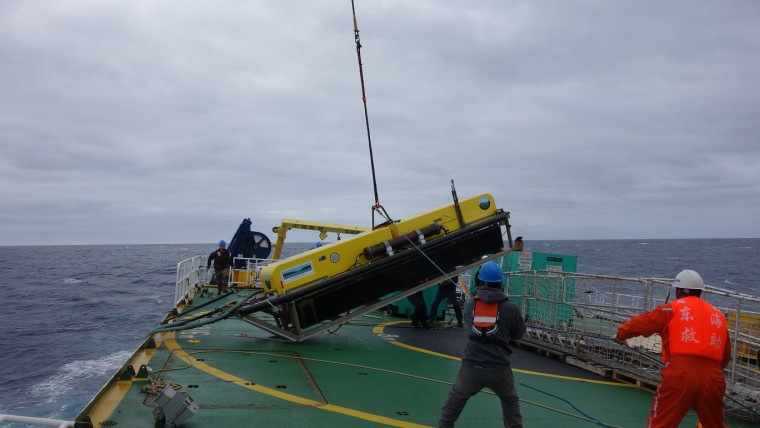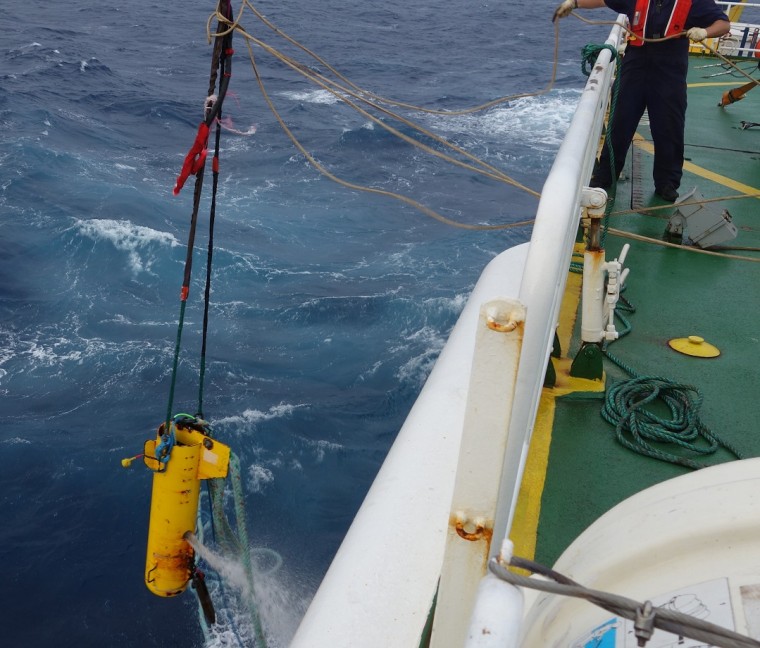Experts hunting for Malaysia Airlines Flight MH370 have recovered their underwater sonar “towfish” that was lost earlier this month thousands of feet below the surface of the southern Indian Ocean.
The yellow torpedo-shaped device, which scans the seabed for debris, was found floating at a depth of more than 12,000 feet, officials in charge of the search said Wednesday in an update.
It was lost on April 13 when a connector on the towing cable attached to one of the search ships failed — the second time in three months that scanning equipment was lost in the ocean.

The SL Hydrospheric SLH‑ProSAS‑60, which was attached to an 1,800-pound weight to prevent it floating, was discovered with the help of a remotely-operated submersible, the Remora III. It was found Monday in “good condition” and was winched onto the deck of the Dong Hai Jiu 101, the Australian Transport Safety Bureau (ATSB) said in a statement.
The weight, which was found nose-down and partly buried in sediment, was recovered separately, it said.
The “towfish” is one of three such devices being used to scan the ocean floor for the Boeing 777, which was carrying 239 passengers and crew when it disappeared from radar on Mar. 8, 2014, while flying from Kuala Lumpur to Beijing.
In January, one of the devices was temporarily lost after it crashed into a 7,400-foot underwater volcano before being recovered around a week later.
The enormous search operation has covered more than 80 percent of a planned 46,000-square-mile search area — but so far it has not located the wreckage site.

Separately, the ATSB said two further items of possible debris — one found in South Africa bearing the logo of engine manufacturer Rolls Royce, and another found by hotel guests on a Mauritian island — arrived at its laboratories on April 13 for forensic examination.
“Investigators from the ATSB and the Malaysian Annex 13 investigation team are examining the pieces to determine if they originated from a Boeing 777, and in particular for any details which might link the debris with MH370,” it said.
On Tuesday, the ATSB gave details on how it concluded that two other pieces of debris found on the east coast of Africa were very likely parts of the doomed airliner 9M-MRO.
Debris washing up in the region is consistent with computer models showing how ocean drift would carry wreckage across the seas, according to officials.
